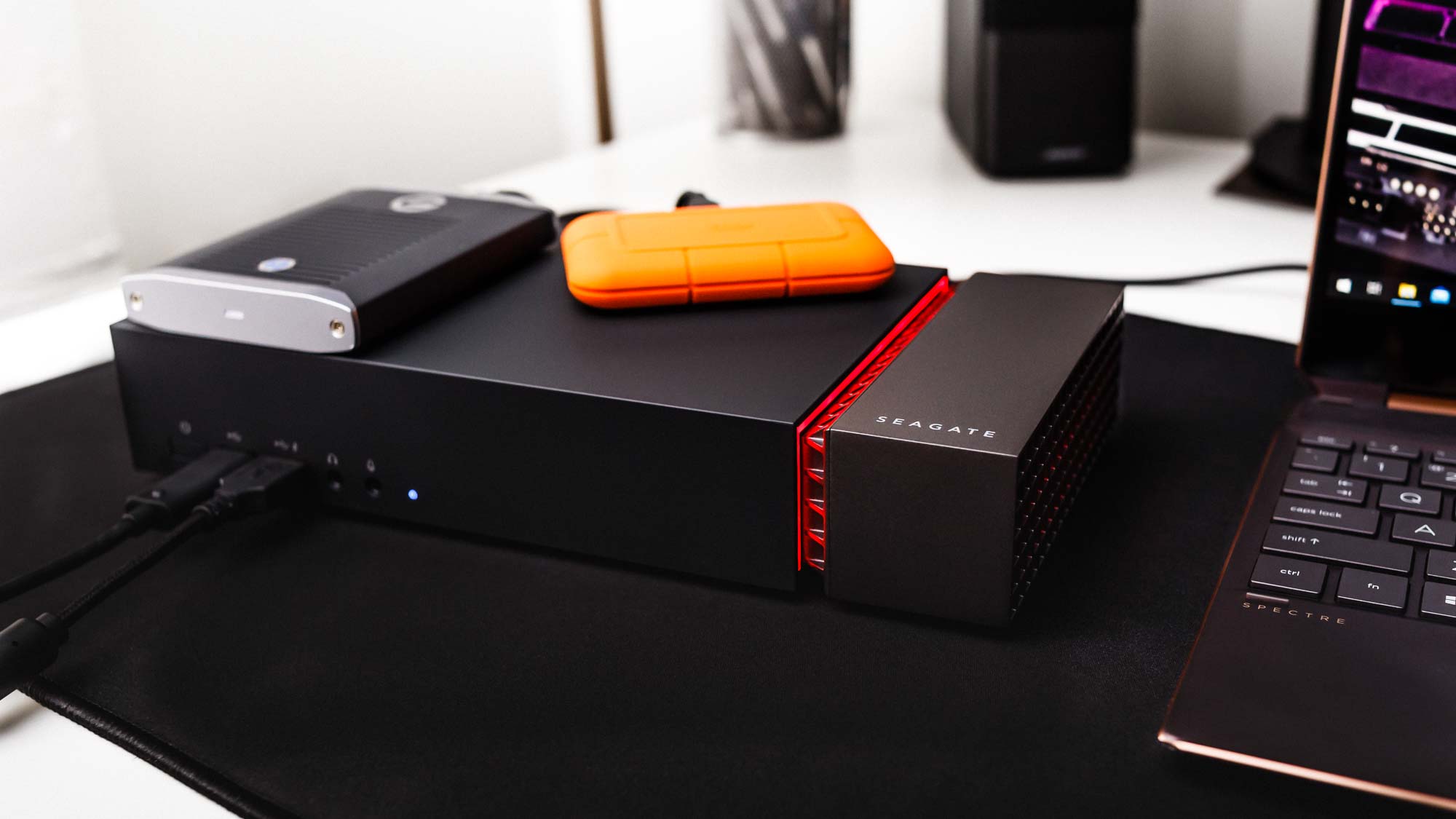Why you can trust Tom's Hardware
Seagate’s FireCuda Gaming Dock is mostly well thought out and a quality-built device. The customizable LED glow looks great without overpowering. The dock is very flexible, with a lot of connectivity. With just a single cable, the connectivity with the device was almost as if I was using a desktop system. Just plug and go.

You can connect to the host over the USB or TB3 interfaces via the Type-C ports. We even tested the device with every one of its five USB ports filled by 10 Gbps SSDs as well as a Thunderbolt 3 SSD and another NVMe SSD in the onboard PCIe 3.0 x4 M.2 slot all at once. All the USB devices performed at 10 GBps in each port. The TB3 ports did well, but there were some minor performance impacts from using the dock with some devices.
With up to 15W of power delivery, connectivity to peripherals over the Type-C ports went flawlessly. They even powered up LaCie’s Rugged RAID Pro HDD when the USB ports didn’t. At times, the mobile Pro SSD wouldn’t power on or communicating when it was connected to the host system by the ASRock Thunderbolt 3 AIC, either. The FireCuda Gaming Dock fixed that little issue too. When G-Technology mobile Pro SSD was connected to the dock, it connected right way, each time without fail.
This storage hub combo can enable you to store your mass game library on the HDD and your most-played titles to whatever high-speed M.2 NVMe SSD you want to throw in. The internal HDD is quite fast with a 7,200RPM spindle speed it can break 250 MBps. Still, that pales in comparison to what the FireCuda Gaming Dock’s optional M.2 NVMe SSD slot is capable of. Testing with a 1TB Seagate FireCuda 510 E12 based SSD, it hit upwards of 2.8 GBps and almost 2.4 GBps write.
Connecting to an external monitor went painlessly and worked within a few moments of connection. When gaming, a laptop screen can be lacking in size of features. Seagate’s Gaming Dock enables quick connectivity to a second, larger and more-responsive monitor via the extra Thunderbolt 3 port or Display port. Or even better, throw in an external GPU enclosure and game on some serious hardware when you’re home. Then disconnect and go on your way to school or work.
Seagate’s FireCuda Gaming Dock is also useful for the creative pro as it is for gamers, but it lacks an important feature: It doesn’t have laptop charging support. While it wouldn’t work for a laptop with high-end graphics, plenty of slim, light laptops can charge over USB-C/Thunderbolt. And for many, this is an essential feature to have on a dock like this. USB-C charging not only helps to free up clutter, but can be very convenient, letting you use one cable to get power and the expanding connectivity of a dock. With more and more laptops supporting this kind of charging, we hope Seagate adds the feature to future versions of this product, or products like it.
MORE: Best SSDs
MORE: How We Test HDDs And SSDs
MORE: All SSD Content

Sean is a Contributing Editor at Tom’s Hardware US, covering storage hardware.
-
velocityg4 Although pricey. It doesn't seem overly expensive if you have use for all the features. As a separate Thunderbolt 3 dock, 4TB hard drive and Thunderbolt 3 M.2 NVMe enclosure would cost more. I can see why they didn't include charging. As it doesn't seem to be universally consistent among laptop makers. Even when they do offer the feature.Reply -
8086 Does anyone know why this drive has a PCI-e x1 slot?Reply
https://cdn.mos.cms.futurecdn.net/PMDQHeVdhtkoafQxiQdc87-970-80.jpg